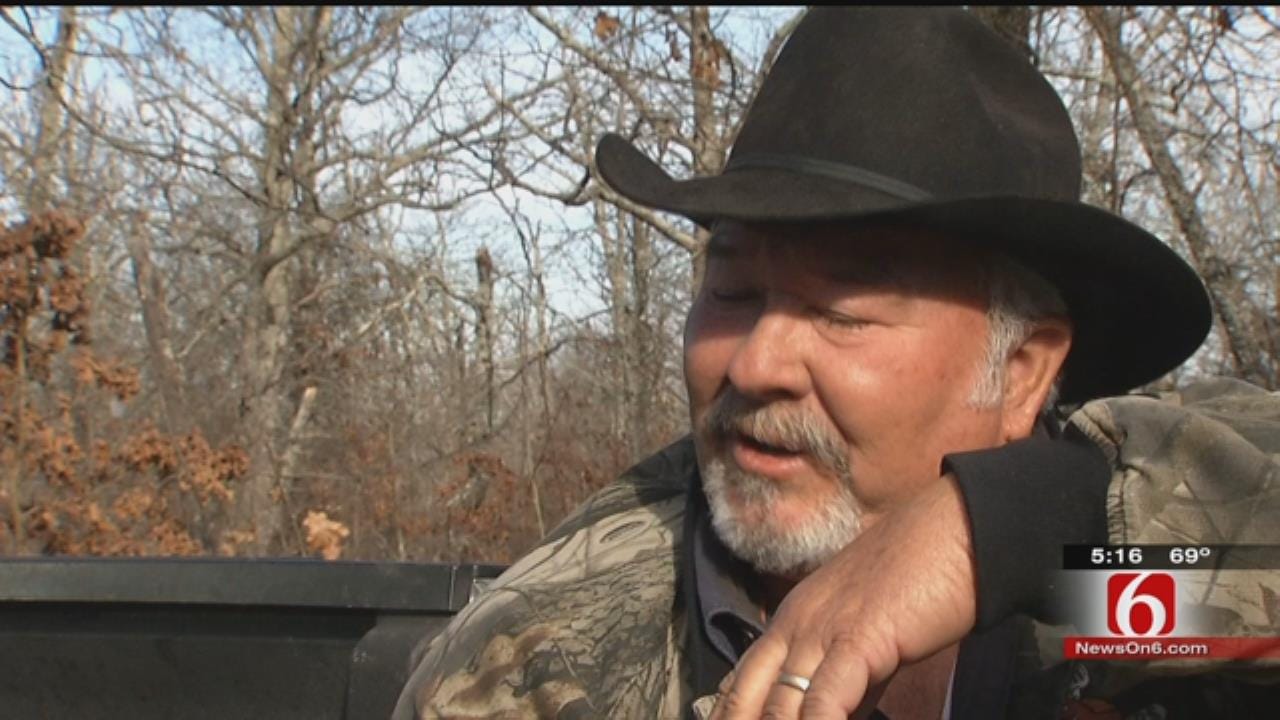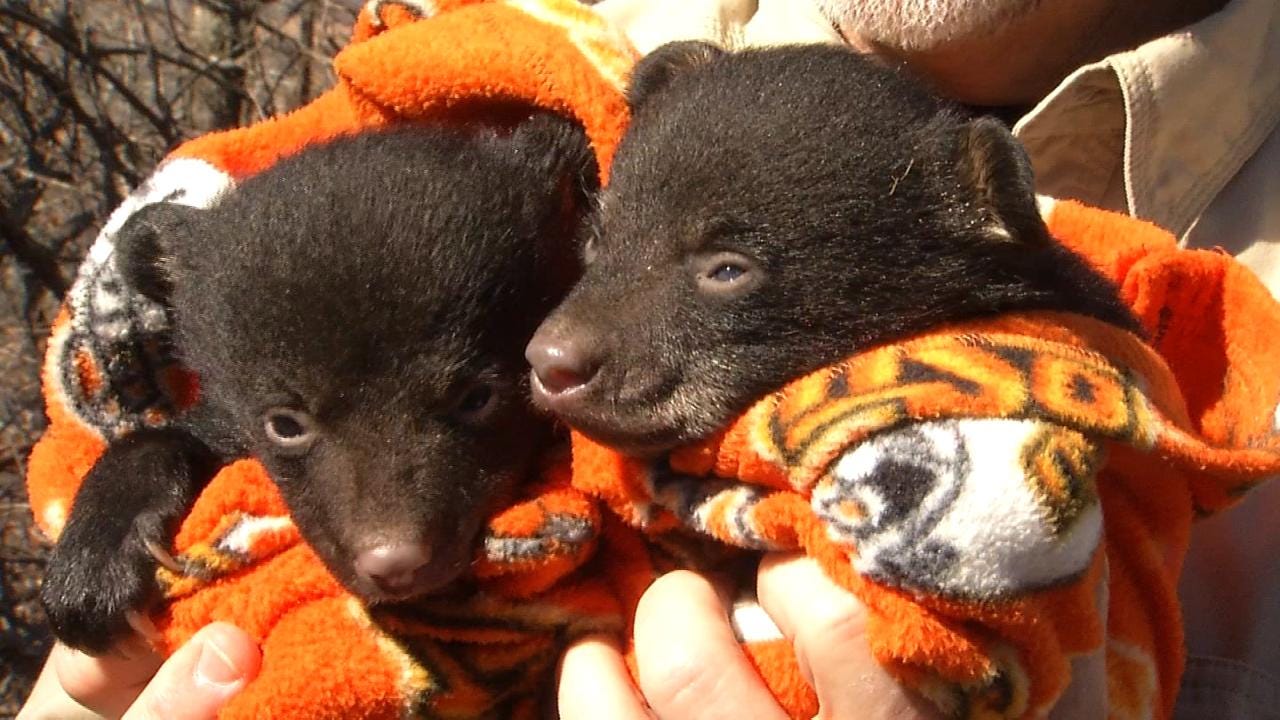Growing Bear Population Could Expand Hunting Season Into NE Oklahoma
<p>Oklahoma researchers are coming face-to-face with wild momma bears and their little cubs to track what seems to be a growing number of bears in northeastern Oklahoma.</p>Tuesday, April 12th 2016, 6:48 pm
Oklahoma researchers are coming face-to-face with wild momma bears and their little cubs to track what seems to be a growing number of bears in northeastern Oklahoma.
Hibernating in a mossy, hillside cave is 4-year-old first-time momma bear, Louise.
“How much do you think she weighs,” Reporter Tess Maune asked while lying in the Louise’s den. “I'm guessing around 170 or so,” Oklahoma State University bear researcher Sara Lyda said.
Louise was asleep, she'd been sedated so biologists could crawl in her den and pull out her two little bear cubs.
“Named the male cub Pete and the female Hazel,” Dwight Davis said. “That was my mom and dad's name.”
The bears were born on Sequoyah County land that has been in Dwight Davis's family for decades, which is why he named the cubs after his parents.
“They'd think that was a pretty neat deal and to think it was on their place, too,” Davis said.
Davis and some of his friends got to hold the cubs and pose for pictures while wildlife biologists got their research station ready. The biologists measured, weighed, took hair samples from the cubs. They also put a pit tag in each cub, much like a microchip for pets, so they can track them in future studies.
“Last year we recaptured four pit tag bears that were tagged as cubs previously,” northeastern wildlife supervisor Craig Endicott said.
The Oklahoma Department of Wildlife and OSU researchers have studied bears in Sequoyah, Cherokee and Adair counties for 6 years. In that time, they've trapped and released 46 adult bears and worked 34 cubs. Endicott says the research will help determine how many bears live in the area, if the cubs stick around and how well they reproduce.
“Those are all important parts of that research put together to decide if, and when, we're gonna hunt them and if we're not, how are we gonna manage them,” Endicott says.
There’s already a bear hunting season in parts of southeastern Oklahoma. Endicott says that season was established when researchers determined a minimum of 200 bears lived in the area. The wildlife department set a 20 bear quota at that time.
But the southeastern part of the state has fewer people and more bear habitat than the northeast. That means the population in Sequoyah, Cherokee and Adair counties could possibly be lower than 200 bears in order to open a hunting season in those areas.
“You can only have so many when you have a lot of people and we don't have as much rural bear habitat here,” Endicott said. “They're here. They're not going anywhere, so we've got to manage them and do our best job of managing them for the public and the bears themselves.”
Endicott says biologists and researchers will have a more exact estimate on northeastern Oklahoma’s bear population by this summer.
“If the population is sufficient and it's reproducing at a high enough rate, then we may have a hunting season,” Endicott said.
If a hunting season is established in northeast Oklahoma, it likely wouldn't happen for several more years.
More Like This
April 12th, 2016
September 29th, 2024
September 17th, 2024
Top Headlines
December 13th, 2024
December 13th, 2024
December 13th, 2024
December 13th, 2024










